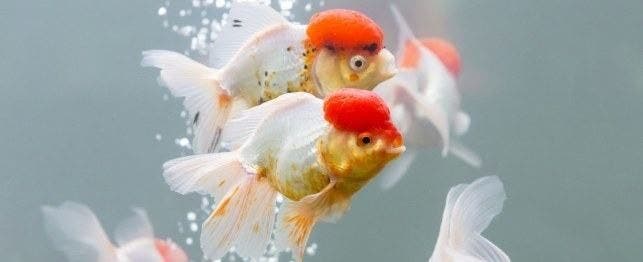
Ich! Why Are There White Spots on My Fish?
Ich or “white spot disease” is the most common disease affecting freshwater tropical fish. It is caused by a protozoan parasite, Ichthyophthirius multifiliis, that multiplies rapidly, causing devastating and rapid death within the aquarium. Ich feeds on the skin and gills, providing sites for infection by other organisms, such as bacteria and fungus. In addition, the resulting holes in the outer layers of the fish make it difficult to maintain the proper concentration of salts in the body.
Any stress on a fish results in a reduced immune response and increases potential for infection. A few of these stresses include poor water quality (elevated ammonia or nitrite, sudden temperature changes, or low dissolved oxygen), poor nutrition, crowding, improper social structure, and aggression. One of the most common causes of ich is introduction of a new fish into an established environment without adequate quarantine.
Symptoms
Ich appears as small, white, raised spots, similar to grains of salt, on the skin of your fish. These spots are actually the adult stage of the parasite known as the trophont, which is enveloped in the pus and tissue of the skin and slime layer. In addition, infected fish display one or more of the following symptoms:
- Increased mucus or slime on the body or gills
- Darkened appearance
- Hiding in an unusual or atypical location
- Flashing (rubbing their bodies against a surface)
- Rapid swimming and breathing or gasping at the surface
- Slow movement (as the disease progresses)
- Diminished appetite
Ich Life Cycle
Trophont (the feeding stage): This is the only stage seen by the naked eye – as the white spots on the fish. The mature trophont burrows under the skin and feeds on the skin and gills. It is well-protected from treatment chemicals.
Tomont (the reproductive stage): After infecting the fish, the trophonts fall off into the gravel and become encysted in a free-living dormant stage. Then they divide into hundreds of tomites.
Tomites (larval stage): Tomites are free-swimming larvae that can survive for about 4 days without a host, although they may be infective for only a portion of that time. It is this stage that is most vulnerable to chemical treatments in the water.
Theront (the infective stage): Tomites mature into theronts, which invade the fish by burrowing into the skin and gills and penetrate within 5 minutes. Here they feed on cells and tissue fluid until they mature into trophonts and begin the cycle all over again.
Treatment
There are a number of effective treatments on the market. The most common are formalin and/or malachite green. Treat affected fish every other day for three treatments at 77 to 86 degrees Fahrenheit (25 to 30 degrees Celsius). Because the temperature affects the time required for development, increasing the temperature will speed up the life cycle and shorten treatment time. At 59 F (15 C), each treatment should be applied every 3 or 4 days because the life cycle is prolonged. These chemicals will work most efficiently if the fish are tolerant, especially when heavily infected. However, the chemicals are toxic to fish if used improperly. And some fish, such as pictus cats, some tetras and related fish, and elephant nose are sensitive to the formalin/malachite combination. Follow manufacturers directions.
Although formalin can be used in ponds, it does not remove oxygen from the water, so knowledge of oxygen levels is critical. Copper sulfate can be used in ponds, but alkalinity must be measured to determine potential toxicity and proper dosage rate. Copper is toxic to invertebrates and algae and can adversely affect higher plants.
When treating the entire tank or system with formalin and/or malachite green:
- Remove carbon filtration
- Perform 50 percent water change prior to each treatment
- Monitor nitrite levels
- Monitor ammonia levels with a test kit using salicylate reagent if you think biological filtration is affected. Kits that use Nessler’s reagent will give a falsely elevated ammonia reading if formalin is present in the water.
- If your fish can handle temperature increase, raise water temperature to 86 F (30 C) to promote ich’s inability to complete its life cycle. Tomites do poorly at these temperatures.
- Use a prolonged salt bath over 1 part per million (ppt), such as 2 or 3 ppt.
Preventative Care
- Avoid adding new fish to your established tank. Quarantine new fish in a separate tank for a minimum of two weeks, but preferably three to four weeks, at 77 F (25 C) or higher. This will allow time for observation for disease and nutritional problems.
- Observe your fish for at least a few minutes each day. Pay attention to unusual behavior, such as not eating, surface breathing, excessive hiding and rubbing against aquarium surfaces.
- Ensure the water condition is kept to the ideal level. Check for the presence of ammonia and variation in pH at least once a month. Practice changing the water regularly, changing only 50 percent at a time.